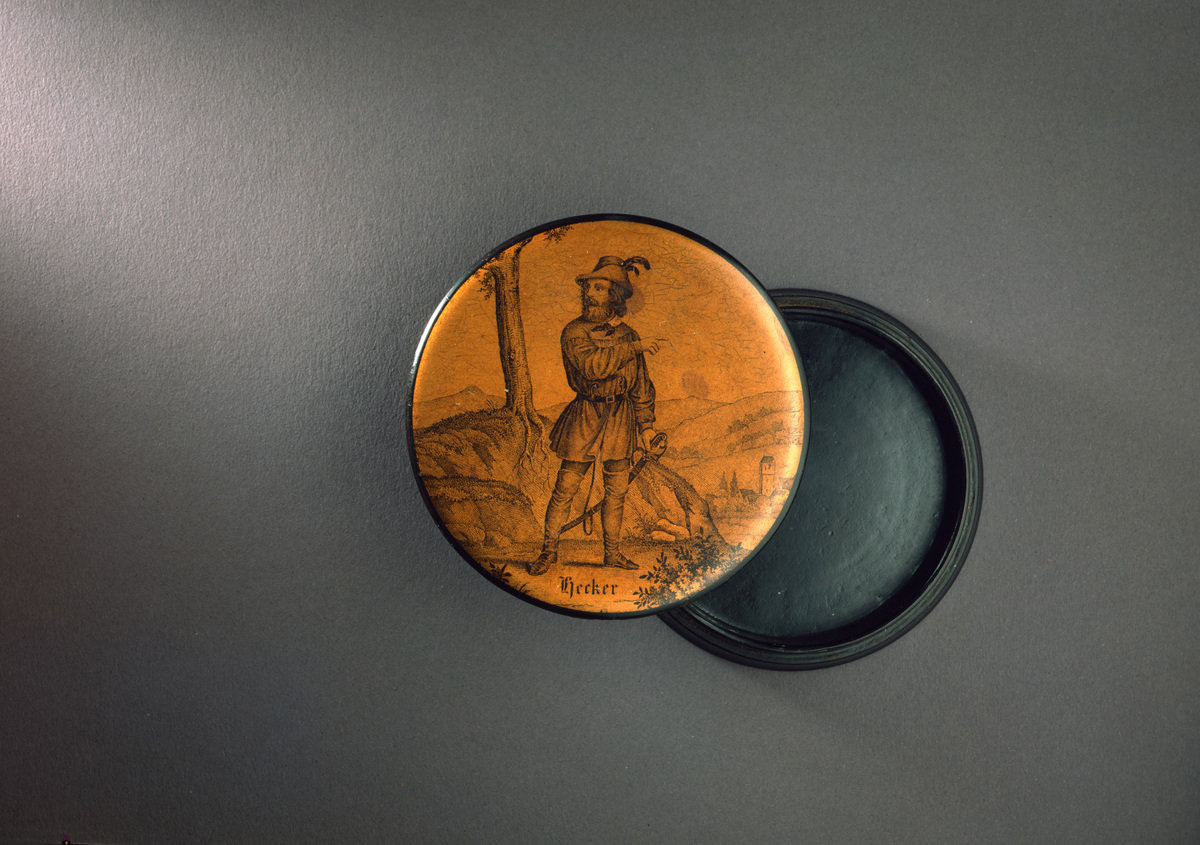Source

Source: Deutsches Historisches Museum, DHM, Inv.-Nr. 1989 / 1161. Available online at: https://www.deutsche-digitale-bibliothek.de/item/4RFM5HKQJTER7B24SEJTFA47VSSO3SIM
While the means of propaganda open to governments were much greater, oppositional movements in the German lands during the Vormärz also used various media to support their political goals, not just in the press but also in the realm of entertainment and material culture. Just as one could purchase snuff boxes or other objects with portraits of the ruler or of important historical figures such as Napoleon I or Prussia’s Frederick the Great (II), so too could one buy a lacquer box with the portrait Friedrich Hecker (1811–1881), a militant German radical of the 1840s. Hecker was already a prominent liberal political figure during the mid-1840s in the state of Baden, but he rose to even greater fame after calling for a German republic in the Revolution of 1848–49. In support of this goal, Hecker unsuccessfully led an armed uprising of radical fighters toward the city of Konstanz in an effort to spur a radicalization of the revolution once it had taken a moderate turn after the Pre-Parliament in Frankfurt am Main in April 1848. Hecker then went into exile in the United States as one of the so-called Forty-Eighters. He went on to support Abraham Lincoln’s candidacy for president and fought for the Union in the U.S. Civil War. The painted image here, transferred from a copperplate engraving onto a lacquered papier-mâché container, shows Hecker with his characteristic feathered hat, hunter’s garb, and revolutionary full beard, his hand on the pommel of his still-sheathed saber and pointing the way forward to his followers. The exposed tree roots, which cling to the edge of a hillside but still support the tree straight and tall, may be interpreted as a commentary on the political situation, either during or just after the revolution, which ended in relative failure for both the radicals and the liberals.

Source: Deutsches Historisches Museum, DHM, Inv.-Nr. 1989 / 1161. Available online at: https://www.deutsche-digitale-bibliothek.de/item/4RFM5HKQJTER7B24SEJTFA47VSSO3SIM
© Deutsches Historisches Museum, Berlin